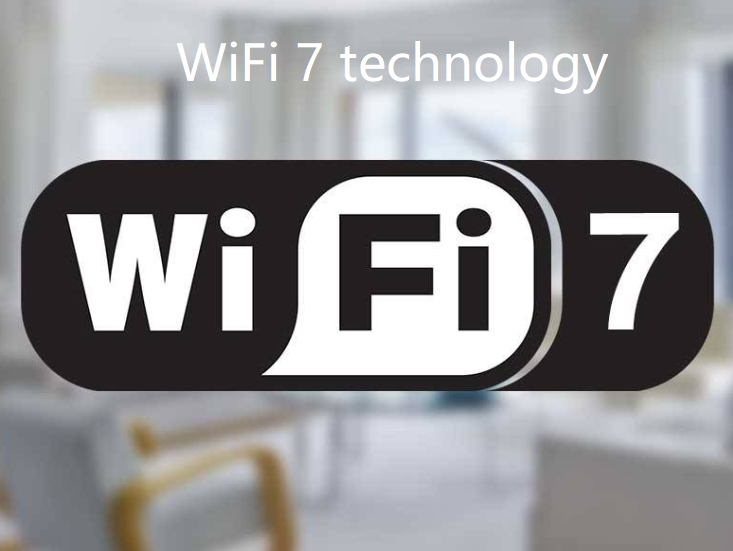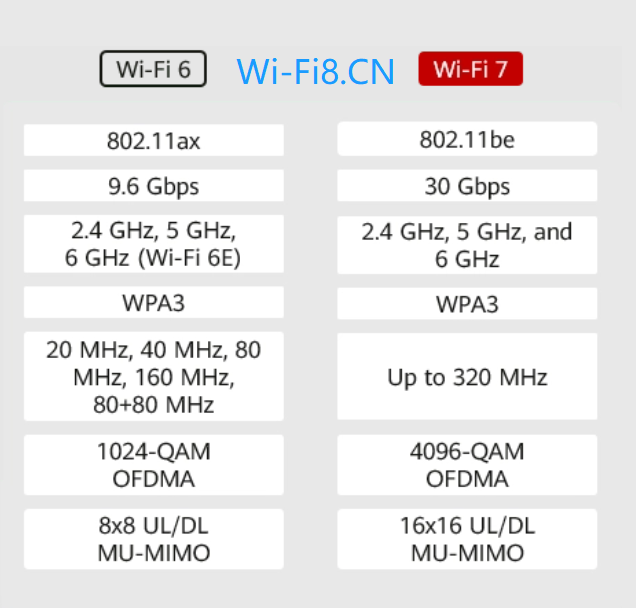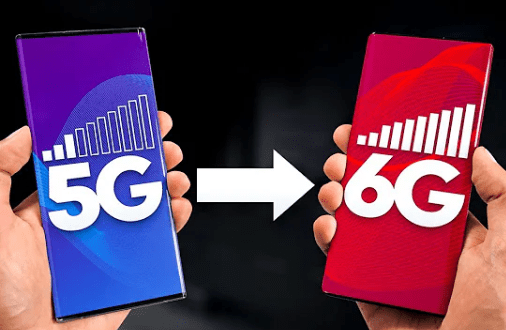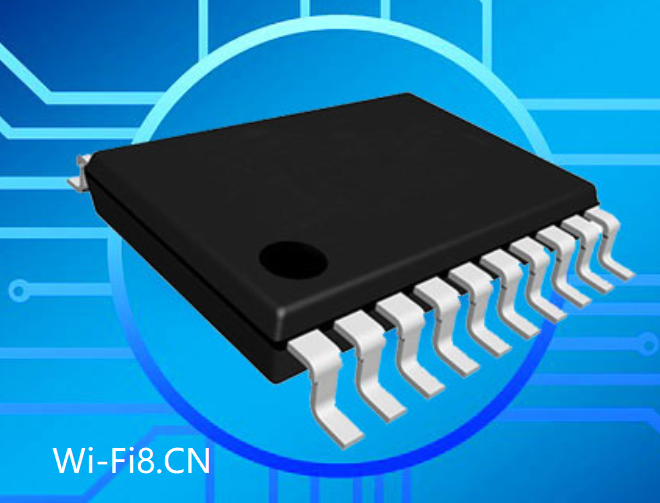What is the latest wireless network technology? WiFi 7 will offer many benefits such as faster, stronger, lower latency, and wider coverage. The new MLO (Multi-Link Operation) chip-scale technology can connect multiple paths at the same time to improve data throughput.
The latest wireless network technology WiFi 7
Interference immunity has also been improved, and transmission bandwidth can be increased by combining multiple channels. WiFi 7 enables inductive switching to the lowest latency channel, with an average latency reduction of 28% compared to WiFi 6.
Many users do not know what the specific information and technical standards of WiFi7 are, the technical standard of WiFi7 is 802.11be, once called IEEE 802.11 EHT, which means ultra-large capacity throughput.
Wireless mesh network (wireless mesh network), also known as “multi-hop” network, is a new wireless network technology that is completely different from traditional wireless networks.
The so-called wireless network refers to a network that can realize the interconnection of various communication equipment without wiring. Wireless networking technologies range from global voice and data networks that allow users to establish long-range wireless connections, to infrared and radio frequency technologies optimized for short-range wireless connectivity.
Wifi7 technology was officially applied, and this time Chinese technology products are at the forefront
The history of WiFi technology dates back to the 1980s, when IEEE released the 802.11 standard to define the basic operation of wireless local area networks (WLAN). With the advancement of technology and the increase in market demand, WiFi technology has continued to develop and evolve over the past few decades.
Subsequently, in 1997 and 2003, the 802.11g standard developed, and as the number of devices continued to increase, band congestion and performance problems gradually appeared, IEEE introduced the 802.11n standard in 2009 to improve speed, efficiency and coverage. Chinese technology companies such as Huawei and ZTE have patent reserves for WiFi technology that cannot be underestimated.
Recently, IEEE released the 802.11ac and 802.11ax standards, which provide higher bandwidth, stronger signal quality, and higher device density support.
The latest WiFi7 technology has also begun to be certified into use, offering higher speeds, better performance, and wider coverage. It has been further developed in terms of high throughput, low latency, and anti-interference and coverage capabilities.
This time, Chinese technology companies took the lead in the application of Wifi 7, after Xiaomi released news that Xiaomi 13 series, Redmi K60 Pro and Xiaomi 10 Gigabit routers will be upgraded OTA to support the latest WiFi 7 technology. This is a product that has been released for 2 months before and users have further upgraded the original network functions at this time, which can be said to be a big surprise. Lei Jun specially issued an article popularizing the upgrade experience and advantages of the new Wifi7 technology.
Black technology based on WIFI network
WIFI network is a cheap and high-quality network technology, is a low-cost wireless Internet technology, has been widely used in the world.
Recently, scientists and engineers based on WIFI technology, and developed a new application, this is WIFI imaging technology, here imaging refers to in the WIFI coverage area, preferably in a closed space, such as a room, the posture of the human body in the image, can see the human body posture, such as standing, sitting, falling to the ground, etc., with this ability, the use of WIFI technology can be used for elderly care, safety monitoring and other functions.
How is the above function implemented? Its principle is mainly to analyze the difference between the WIFI transmission signal and the received signal, the different postures of the human body, will affect the difference between the received signal and the sent signal, the use of AI technology, after a large number of training, you can detect the different postures of the human body, so that through the WIFI signal can be imaged on the human body’s posture, although this imaging technology and photographic technology can not be compared, but this technology cost is very low, can be deployed on a large scale, this research is still in the early stage of research, There is still a lot to improve.
Since the training data used for AI is collected in a specific environment, after training, the imaging effect in that environment cannot be used in other environments, so in order to achieve this imaging effect in different environments, AI training must be re-performed. At the same time, if the frequency of the WIFI is different, the antenna is different, etc., it will also need to be retrained to generate correct postural imaging.
This black technology is expected to be widely used in indoor monitoring in the future. Because this technology does not require the deployment of cameras, nor does it need to deploy detection radar, the cost is very low.
The Xiaomi Mi 13 Pro has a stronger network connection, and the link supports the FastConnect 7800 connection system, making it the world’s first smart device to support WiFi 7 technology. Speeds up to 5.8Gbps enable ultra-low 2ms latency performance and 30%-50% higher energy efficiency than the previous generation.
The Xiaomi Mi 13 Pro boasts WiFi 7’s highest theoretical rate, reaching 5.8Gbps. It is not difficult to predict that this will be the leading experience advantage in the environment of high communication network demand, such as in the application of game e-sports scenarios, network conference scenarios, etc.
This Wifi7 technology upgrade can be said to be unexpected for most users, originally in the network communication technology, Apple, Samsung, Huawei and other old technology companies products did not support the latest Wifi7 technology, Xiaomi’s first support, behind it reflects that the technology and product competitiveness of Chinese technology companies is prominent.












